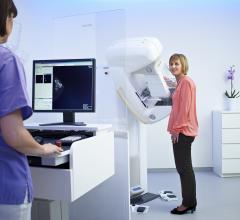If you enjoy this content, please share it with a colleague
Philips
RELATED CONTENT
The latest advances in echocardiography were discussed at a special evening symposium at the 2015 American College of Cardiology (ACC) meeting, organized by Methodist Debakey Heart and Vascular Center.
It’s funny how terms catch on. Sometimes it’s the result of an innovator’s brand. No one goes out to play flying disc — we play Frisbee. Sometimes it’s the result of simplification. Everyone in healthcare knows about PACS — even when many (if not most) don’t know what exactly PACS (picture archiving and communication system) means. Then there is that instance when a term is generally used but doesn’t necessarily fit — either by innovation or by general adoption.
Philips Healthcare launched IntelliSpace Cardiovascular at the American College of Cardiology (ACC) 2015 meeting. The Web-enabled cardiovascular information system (CVIS) offers a single integrated workspace that produces a holistic view of the patient's care continuum across the entire cardiovascular service line. The new solution provides cardiologists with sophisticated tools for diagnosis and planning of patient cardiovascular care. The system uses an intuitive icon based tab system to easily sort and recognize various types of exams, imaging and reports.
Royal Philips announced a collaboration with the University of California Irvine to explore how spectral breast imaging can improve breast density measurement, potentially aiding clinicians in more accurately gauging breast cancer risks and monitoring changes over time. The study will rely on Philips' MicroDose SI mammography spectral imaging technology.
As healthcare and radiology continue to evolve rapidly, flexibility in the operating room (OR) and imaging lab are key. Consequently, imaging systems need to be versatile as well as able to handle a variety of applications and adapt to any space. These needs have led to the increasing popularity of mobile C-arms, the latest generation of X-ray technology. Today, they are being adapted to handle fluoroscopy, vascular imaging, cardiology and 3-D imaging.
Angiographic imaging system vendors have developed several new technologies to address emerging cath lab trends, including the need to reduce radiation dose, improve image quality and enable advanced procedural image guidance. All three of these points have become increasingly important as more complex procedures are attempted in interventional labs and hybrid ORs. These procedures include embolic coiling, neuro-interventions, thrombectomy, aortic repair, transcatheter aortic valve replacement (TAVR), mitral clip valve repairs, left atrial appendage (LAA) occlusions, atrial and ventricular septal defect closures, and new interventions for both electrophysiology (EP) and heart failure.
The future of ultrasound looks auspicious, according to Jonathan M. Rubin, M.D., Ph.D., director of the division of ultrasound in the department of radiology at the University of Michigan in Ann Arbor, who presented on “The Future of Ultrasound” at the 2014 Radiological Society of North America (RSNA) conference in Chicago this past December. His lecture highlighted emerging techniques for volume blood flow and shear wave imaging.
The exhibit floor at RSNA 2014 reflected a new era of austerity, one in which efficiency and effectiveness ruled. From South to North halls — Toshiba America to Siemens, Hologic to Samsung — new products and works in progress were distinguished by how they improved the lot of medical imaging among the various “ologies”.
Philips introduced the IntelliSpace Portal 7.0 at RSNA 2014.
Philips has signed an agreement with Image Stream Medical (ISM) that allows Philips to further expand its hybrid suite and interventional lab solutions with integrated video and live streaming capabilities. As part of the agreement, Philips has acquired a minority stake in ISM. Financial terms of the agreement were not disclosed.


 April 17, 2015
April 17, 2015 




